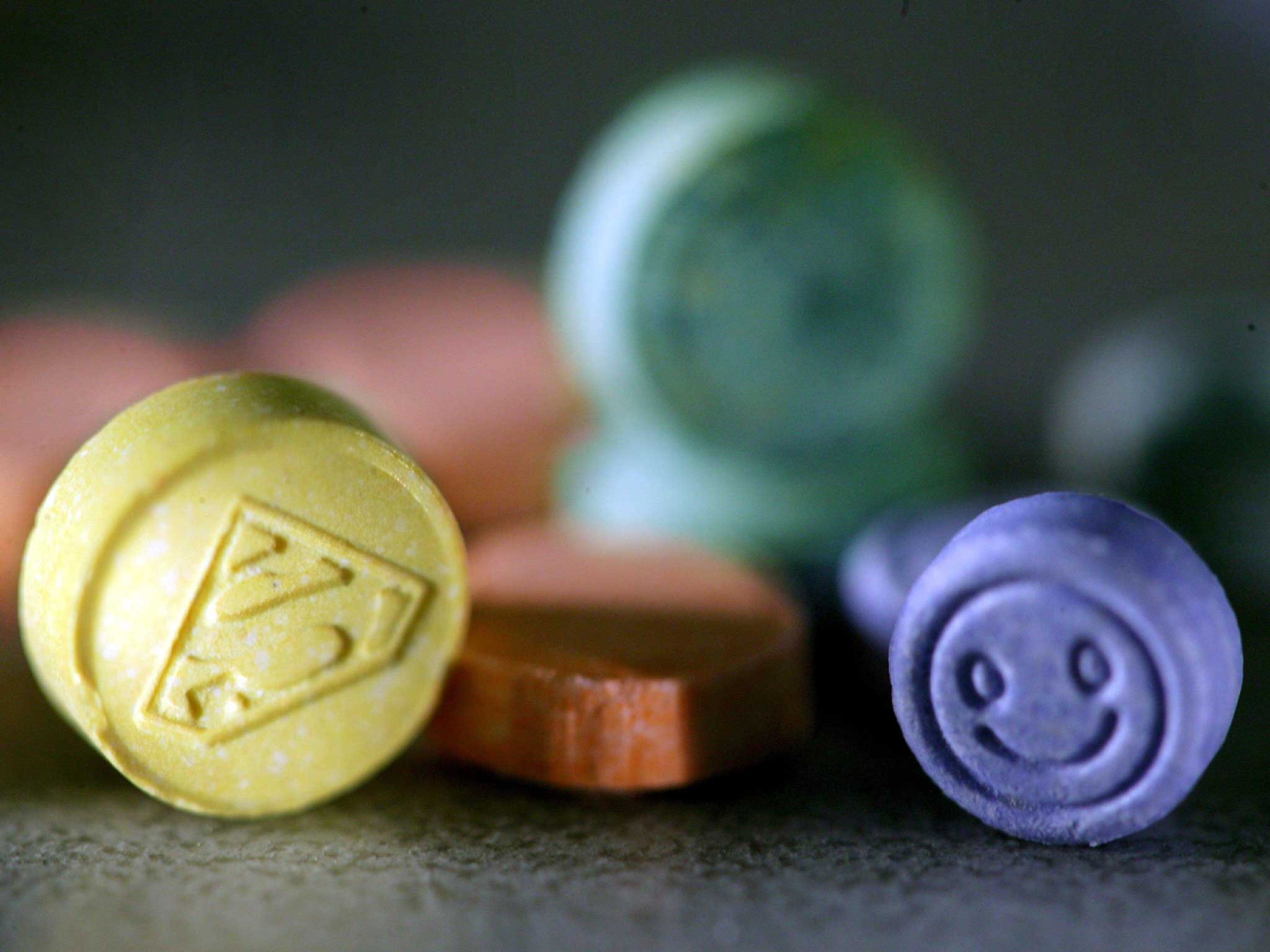The evolution of ecstasy: From Mandy to Superman, the effects of the drug MDMA
Ecstasy use is now a very different phenomenon. Some of these drugs are so new that neither users nor researchers have a true understanding of the potential short or long-term effects associated with use

Ecstasy is a nickname for the psychoactive drug MDMA. The drug has been popular among dance music enthusiasts for decades, but the drug has begun to change in recent years, and these changes have led to many adverse outcomes, including death.
In the last few weeks, four people in the UK died after reportedly taking pills from a "bad" batch of ecstasy - and officers suspect all are linked with a batch of "Superman" pills from Ipswich. Over the last couple of years, throughout both Europe and the US, many users have been hospitalized or have died after taking ecstasy. So many poisonings have begun to occur largely because adulterants—primarily new psychoactive drugs—are now commonly added to ecstasy.
The history
Ecstasy has been one of the most popular party drugs since the 1980s. Despite being illegal, use has been widely available and closely associated with the dance music scene. Use was highest in the UK and in the US in the late 1990s and early 2000s, and decreased for about a decade. However, use in the UK increased in 2014. Although use has traditionally been associated with all-night dance parties such as raves, use has become more mainstream over the last decade due to growing popularity of dance festivals and “electronic dance music.”
I have been researching the epidemiology of club drug use since 2001 and I have interviewed hundreds of club-goers about their ecstasy use. I was also a “club kid” myself in New York City back in the day, and frequenting after-hours nightclubs for many years, I have witnessed quite a bit of ecstasy use.

When you walk into a party, club or festival full of ecstasy users, you will notice that it is nothing like your usual bar experience. Living up to its name the “hug drug,” when you see people “rolling” on ecstasy, you may witness them hugging, bonding or even thinking they’ve fallen in love with the person they just met.
Users tend to feel highly sensual, which leads many users to touch, hug, kiss or caress others. However, ecstasy is actually not very sexual drug, and many male users are impotent while high. But this doesn’t mean that ecstasy doesn’t place users at high risk for sexual risk behavior. And unlike the bar scene, fights are rare if not non-existent among ecstasy-using crowds. You may witness someone flirt with a big guy’s girlfriend, but instead of getting beat up, he receives a hug.
All of this occurs because ecstasy use tends to provide a strong sense of euphoria, empathy and a sense of connection and oneness with others. This feeling is so strong, especially among new users, that they might want to give a stranger or even an enemy a hug. Clinical trials are testing whether the openness and insight provided by ecstasy are in fact effective in psychotherapy (for example, with PTSD victims) and thus far, results seem promising. The drug also increases sensory perceptions, which is why many people use at nightclubs or festivals which have lights and loud music.
The risks
Ecstasy use can lead to many acute adverse effects including nausea, vomiting, chills, sweating, muscle cramps, dehydration, hyperthermia, and teeth-clenching – many of which can easily be exacerbated by hot nightclub environments and long periods of dancing.
The few days following use, people often experience different adverse effects. Since ecstasy releases serotonin from the brain (which leads to ecstasy’s “positive” effects), it can take days for serotonin to reach normal levels again. During this time of depletion, users often experience symptoms very opposite the feeling of ecstasy including depression. In fact, the term “Suicide Tuesday” pretty accurately describes the intense depression many users experience a couple of days after their weekend use. Users also often experience anxiety, insomnia and lack of appetite for the next few days following use. It is also possible that extensive use may lead to long-term changes in brain chemistry.
And of course one of the most detrimental results of possession is arrest and incarceration. Ecstasy is a Class A drug and an ecstasy-related arrest can lead to up to seven years in prison. An arrest for supply and production can lead to life in prison.
The forms
The effects discussed above are traditional knowledge shared by users and drug researchers alike. However, ecstasy has begun to change in recent years. Yes, the demographic of use has expanded — ecstasy is now also used in the hip hop scene and at more mainstream dance festivals. But the drug itself has begun to change, too, and ecstasy-related deaths have sadly begun to become common in recent years.
While “ecstasy” is intended to mean MDMA, over the years, many batches of ecstasy have begun to be “cut” or adulterated with other drugs. Adulterated ecstasy is nothing new. Ecstasy has been cut with drugs such as 2-CB, ketamine, DXM, and methamphetamine for years. Drugs such as mephedrone (“bath salts”) have been popping up more and more in ecstasy, and newer, more dangerous drugs have begun to show up in pills, and numerous bad batches have led to deaths.
For example, blue “Batmans” contained a high amount of a potentially deadly drug called NBOMe and led to a death and hospitalizations, and in the last few weeks four people died after allegedly taking pink “Superman” pills, which contain a high concentration of the potentially deadly new drug PMMA. Other deaths have occurred after users ingested pills containing new drugs such as 4-MTA or methylone.

Interestingly, a recent study in the UK found that many pills are now of high purity, and users have been deemed at risk by ingesting such a high-purity product. But it appears to be the adulterated pills that tend to be more dangerous than true MDMA. Many pills contain little to no MDMA and possibly large doses of dangerous new chemicals. Adulteration appears to be even more prevalent in the US as the new most common form of ecstasy is now powder (called "Molly" in the US and "Mandy" in the UK), which can be adulterated at any level—by the manufacturer or any dealer along the way.
Some “research chemical” additives or replacements may not be as harmful as MDMA, but some of these drugs are so new that neither users nor researchers have a true understanding of the potential short or long-term effects associated with use. Thus, ecstasy use is now a very different phenomenon.
Interestingly, a lot of people actually prefer taking new “research chemical” drugs as opposed to real ecstasy because they remain “legal” for a brief period and use generally does not result in arrest. Others use new drugs intentionally as a means to pass drug tests at work, or even to avoid the stigma of being a drug user.
Despite stiff legal controls, ecstasy use is not going to go away. New users and potential users need to be properly educated about effects and helping those in need. Likewise, those who insist on rejecting abstinence really need to learn to practice harm reduction. The recent ecstasy-related deaths should serve as a warning. Ecstasy is changing and we need to focus on saving lives.
Joseph J. Palamar, PhD, MPH, is an Assistant Professor in the New York University Langone Medical Center, Department of Population Health
@josephpalamar
Join our commenting forum
Join thought-provoking conversations, follow other Independent readers and see their replies
Comments